Frank Lloyd Wright (1867-1959) was a famous American architect from the late 1800s through the 1900s. He was originally from the Midwest, where he was known for his distinct Prairie style homes.
With his first home in Los Angeles, the Hollyhock House, Frank Lloyd Wright went for a self-described, California Romanza style. The term, “Romanza,” is typically used in music with Wright interpreting it to mean “freedom to make one’s own form.” This makes perfect sense since Wright was experimenting and developing a new design style to fit Southern California’s dry, Mediterranean climate.
Today, many people classify the Hollyhock House as Mayan Revival style that was popular at the time. The house became a predecessor of the textile block residences Wright was famous for in the Los Angeles area. In July 2019, the Hollyhock House, along with the Unity Temple, Frederick C. Robie House, Taliesin, Fallingwater, Herbert & Katherine Jacobs House, Taliesin West, and Solomon R. Guggenheim Museum, were designated UNESCO World Heritage Sites.
Fun Fact: Mayan Revival was a modern design style of the 1920s and 1930s. It was inspired by pre-Columbian Mesoamerican culture and used motifs similar to that of Mayan architecture.
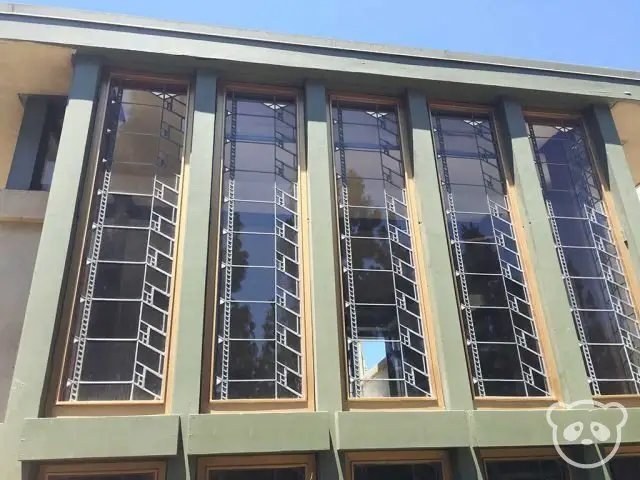
Table of Contents
The Vision
Aline Barnsdall, an oil heiress originally from Pennsylvania, purchased the 35-acre lot on Olive Hill in the eastern part of Hollywood. She had intended to produce theater in her own venue and commissioned Frank Lloyd Wright to design a home and several other buildings on the property.
Originally, Barnsdall had planned to build a sprawl of buildings including a main residence for herself and her daughter, 2 secondary residences, director’s house, actors’ dormitory, artists’ studio buildings, theater, and several shops. She wanted to create an artists’ colony where the creative could grow and flourish.
The Hollyhock House was Wright’s first project in Los Angeles as well as the first home he designed after his Prairie style period.
Fun Fact: The home was named after Aline Barnsdall’s favorite flower, the hollyhock. Because of this, Wright designed a hollyhock motif which he used throughout the house.
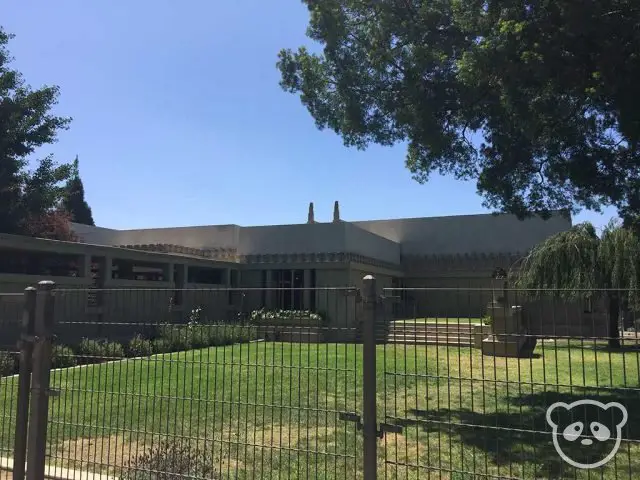
The Style
Note: Photos are not permitted inside the home, as such I will be primarily discussing areas of the home that you can refer to easily by searching Google Images so that you can find photos in public domain instead of imagining the space.
The overall architectural style was reminiscent of Central American design because of its large, modular slabs similar to those of Mesoamerican temples. In addition, the geometric detail of the hollyhock symbol repeating throughout the home created ancient Mayan-like patterns.
Various aesthetic elements and properties of the Hollyhock House qualify it to be more broadly described as Art Deco style. The use of repetitive geometric patterns, the bas-relief, and horizontal slabs combined traditional Mexican art with a bit of cultural appropriation to create the luxurious vibe and grandeur of Art Deco.
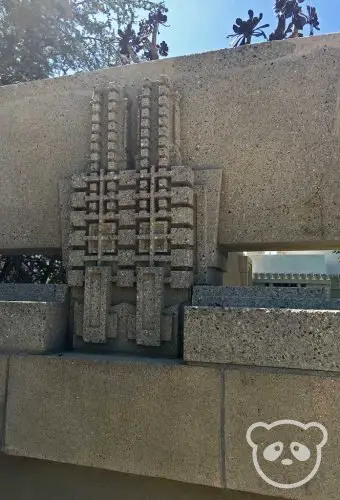
Hollyhock Motif
Because it was Barnsdall’s favorite flower, she specifically requested Wright include it in his designs. As such, he created a graphic that was placed in all areas of the house, from the leaded stained glass windows to the metal gate on the exterior of the house and to the exterior decoration on the house itself.
Fun Fact: Wright designed 130 stained glass windows for the house; today, approximately 100 remain original to the structure.
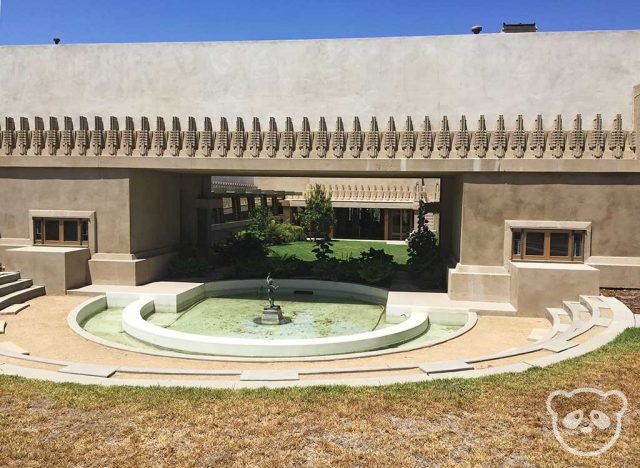
Exterior
Aside from building design, Wright was also involved in all aspects of the home including the landscaping. One of Wright’s main goals was to utilize the warm Los Angeles weather, he created a pool with a series of waterways allowing water to flow from the yard, into a moat in the living room, and then out again into a fountain.
This design was his concept of “organic architecture,” providing the homeowner with a taste of the outside while they remained inside the house. This also served as the focal point of the house and is very noticeable when you first enter the home. Unfortunately, this was also one of the beautiful features Wright designed that didn’t work very well and it was disconnected early on.
The hollyhock symbol, or “logo” as I like to call it, is seen throughout the exterior of the house and used as ornamentation. It was also repeated on the outside wall, just below the roofline on the other residence built by Wright on the property. The motif is also seen on the metal gate at the entrance of the home and on the planters.
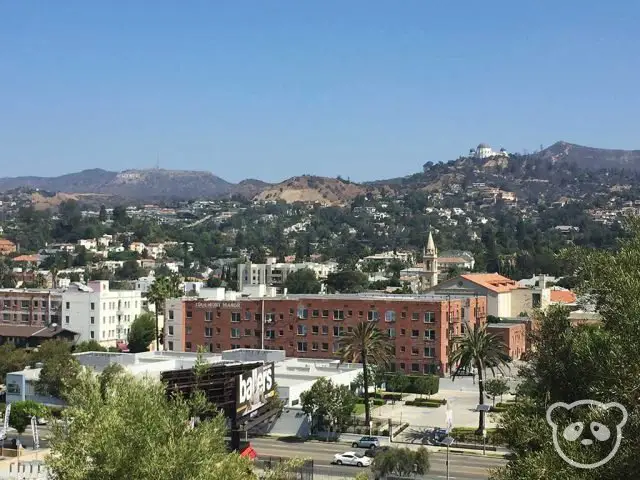
Interior
As mentioned earlier, the living room was the main focal point of the room, specifically the fireplace or the “hearth.” Like in his Prairie-style homes, Wright felt it was necessary to draw attention to the fireplace as he considered it to be the center of the household. He accomplished this by having the moat inside the house flow around the fireplace as well as placing a geometric relief on it. In my opinion, it served its purpose as it is also one of the most memorable parts of the interior design in the home.
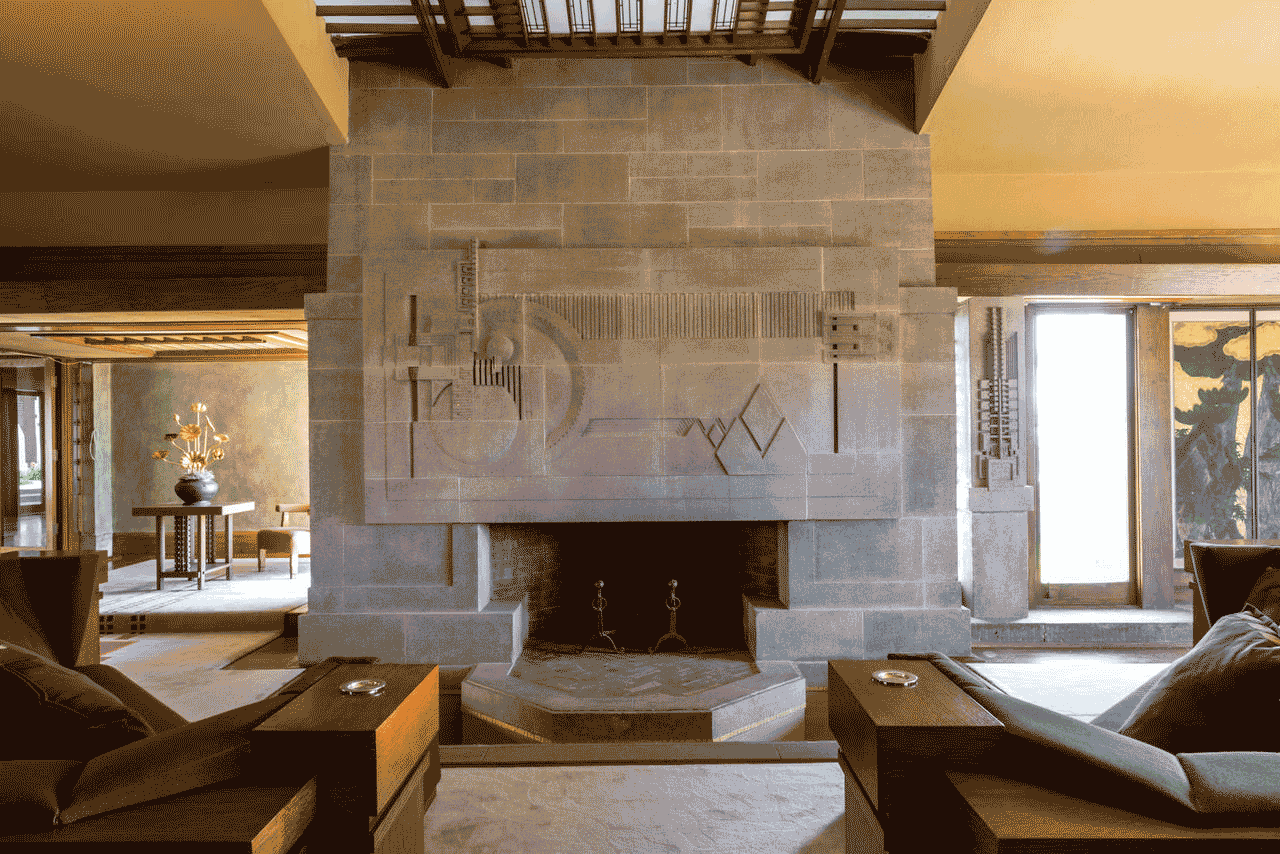
Fun Fact: Many of Wright’s homes included a “Music Room” as he was a huge fan of music. The “Music Room” in the Hollyhock House happens to have amazing views of the Hollywood sign and the Griffith Observatory. This was purely coincidental, both structures were created after the house was commissioned.
Aside from the overall design of the home, Wright also took responsibility for furniture creation and in some homes, he even went as far as making table settings. However for majority of his commissions, his furniture designs included the logos he created for the respective home. At the Hollyhock House, you’ll see some of his custom furniture in some areas of the home. The dining room table and chairs are original to the house and the living room has furniture copies and a reproduction of the original carpet.
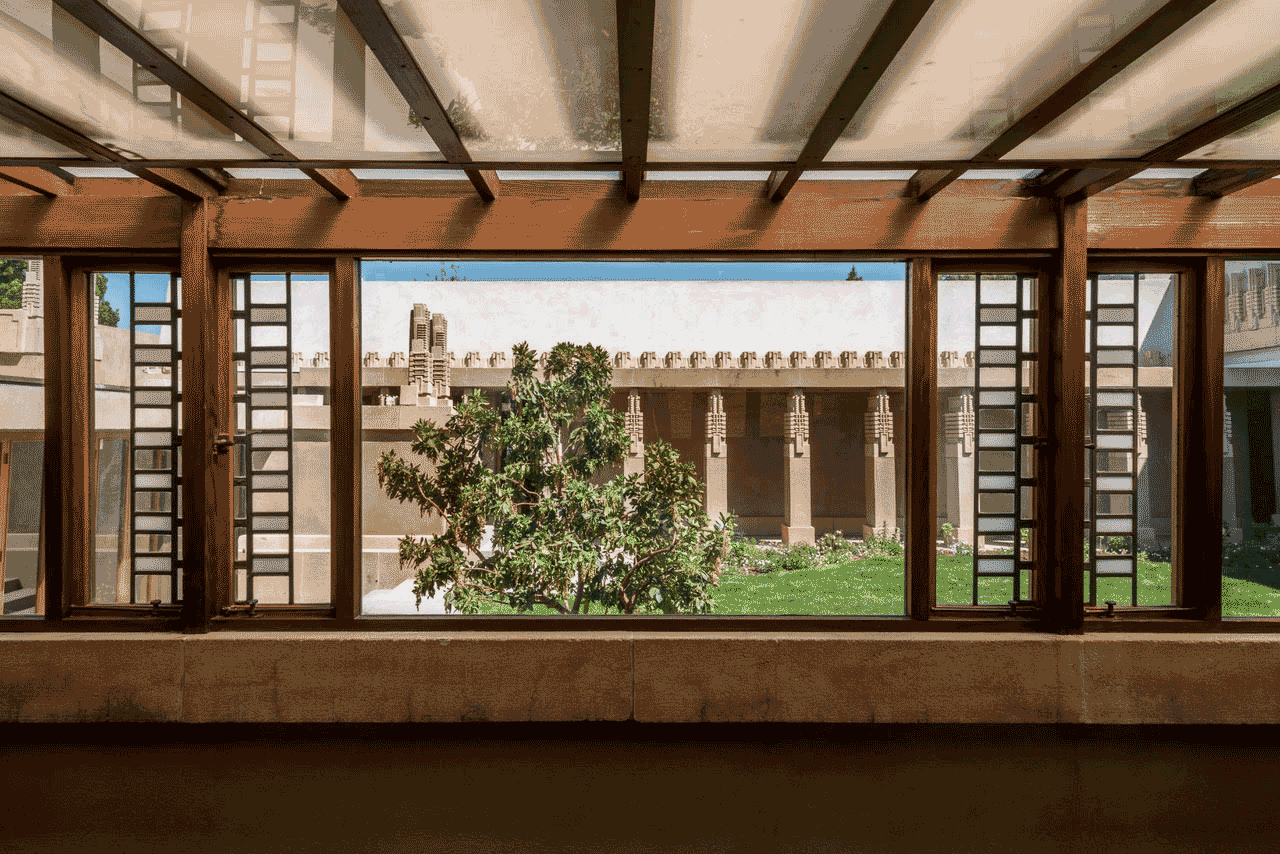
The Completion
Wright worked on the buildings from 1919 until 1921, when Barnsdall fired him due to budget issues and creative differences. She had become frustrated with Wright’s increasing costs as well as his failure to deliver plans for the director’s house.
After Barnsdall fired Wright, she worked with the City of Los Angeles to donate the land and homes to the city with the promise that it would be utilized for art-related purposes.
In the end, only the Hollyhock House and the two secondary residences were built. One of the residences was demolished in 1948, leaving the Hollyhock House and the remaining secondary residence (Residence A) in existence.
Despite the full commission remaining unfinished, her original vision of creating an art community stands today as the property has become the Barnsdall Art Park.
Visiting Information
Tickets & Hours
General admission (Self-Guided Tour)
$7 adults, FREE for children under 12
45 minute docent-led tour
$7 per person, available Tuesday through Wednesday at 11:00 am & 12:30 pm
20 minute docent-led exterior tour
$7 per person, available Thursday through Sunday, 11:15 am, 12:00 pm, and 12:45 pm
This tour is only of the exterior of the building.
Note: Tickets must be purchased in advance for the 45min docent-led tours.
Purchase tickets here.
Helpful Tips
- Photography is NOT permitted inside.
- Food or beverage is NOT allowed.
- Flat shoes, preferably rubber soled are recommended. Stiletto shoes or shoes with spiked heels are not allowed. Shoes must have a minimum heel width of two inches.
- Shoe covers will be provided and must be worn inside the house. Children may wear socks instead.
- Strollers are not allowed inside but may be left at the entrance.
Address & Getting There
Hollyhock House
Barnsdall Art Park
4800 Hollywood Boulevard
Los Angeles, California USA 90027
Website

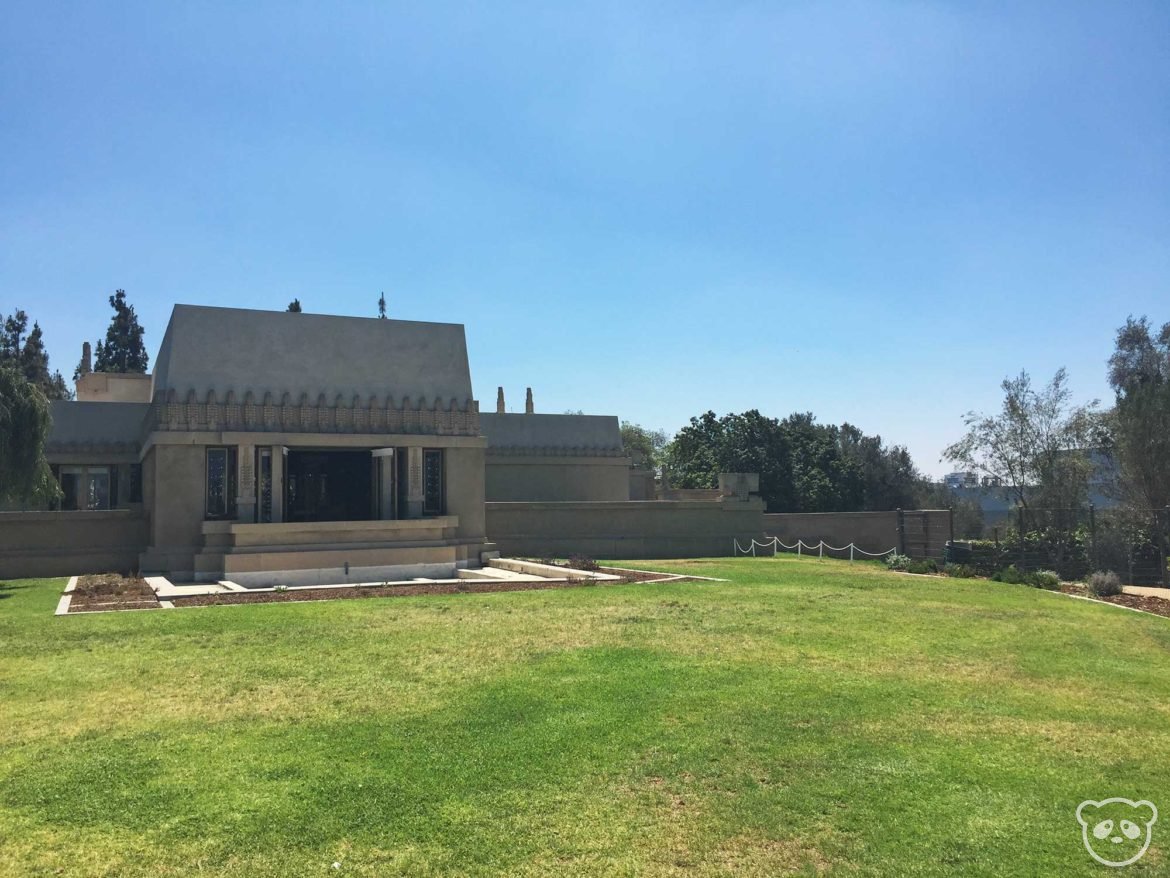
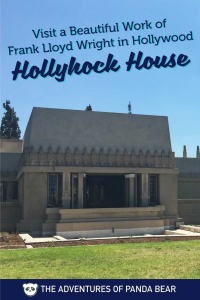
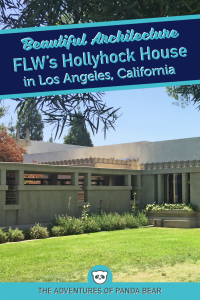
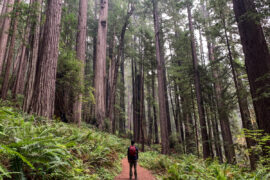
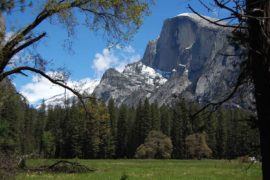

14 Comments
Constance Panda, thanks a lot for the post. I really enjoyed it!
Awww thank you Alexa, I’m glad you liked this one 🙂
I love architecture and Frank Lloyd Wright. Always reminds me of the Guggenheim here in NYC. I would love to see all the stained glass throughout the building and had no idea it was named after a flower. Super cool!
Thank you, I’m so glad you enjoyed the post. The Guggenheim is super amazing, I totally need to go back!
I can’t believe I never visited when I lived in Southern California! The architecture looks so cool! I will definitely have to make a little trip up to LA the next time I visit my parents. Too bad you can’t take photos inside though. 🙁 Haha.
Yeahhh I totally wished I could take photos inside since it’s really beautiful. Oh well!
I’ve never heard of this place. It looks quite fascinating & I wish we could see the interior. More reason to go visit I suppose! 😉 Thanks for sharing!
I wish I could’ve taken photos of the inside, but it’s not allowed haha maybe they’re just trying to get more people to visit!
I love unique architecture 🙂 I haven’t been to the USA so it’s nice get to know different places it has to offer.
Glad you enjoyed the post! 🙂
What a cool museum! Yet another reason to eventually visit Southern California.
It’s super cool to see the work in real life and it’s definitely more of an underrated sight in LA. Glad you enjoyed the post!
I’m not a huge architecture fan, however you have made this into a fascinating read! His work seems very unique with the geometric designs on the window and the influence of the Mayan style. I do like how the Hollyhock motif has been used inside and outside of the house. I’ve yet to visit any of Frank Lloyd Wright designs, but will do when I visit L.A.
Glad you like the post! It’s a great off the beaten path spot so I’m sure you would enjoy it 🙂